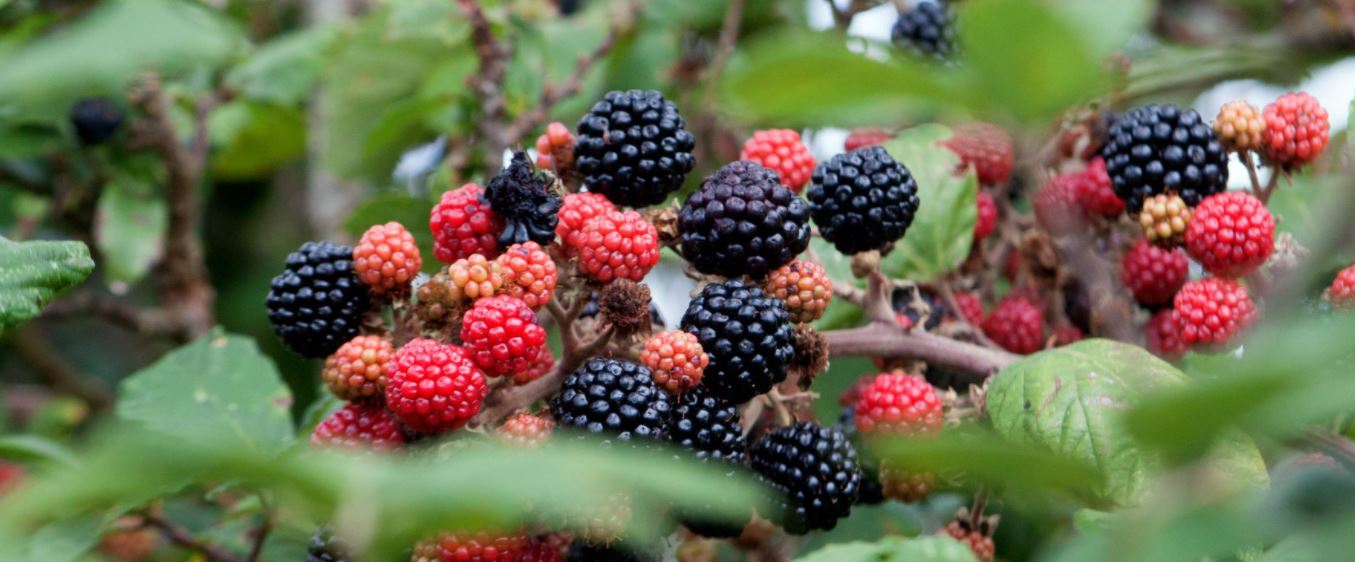Eden Wild Goose Nature
Nature notes from the Focus Magazine Sept 2021

Brambles
Such common things! How you feel about them might depend on how you name them, and that might vary from day to day. Are you picking your way through a swathe of prickly and distinctly unwelcoming vegetation, a rambling, spiny thicket that seems to have sprung from nowhere? Then it’s probably brambles you’re cursing as you nurse that scratch or try to extricate a thorny splinter. Or are you dwelling on the delights of a delicious crumble you intend to be eating later today? Then all is forgiven as you gather blackberries in the early autumn sun, fortifying yourself with a few berries to be going on with, while deep purple juice stains collect on your fingers and your chin. At that point all is well with the world, though an ever- hungry blackbird might glare at you from a nearby branch and come to a different opinion.
Call them what you will, the common bramble cum blackberry bush cum ‘rubus fruticosus’ is all over the place. We can’t avoid them, we love them, revile them and pretty much take them for granted as part of the scene. And yet, unsurprisingly, this ubiquitous fellow resident of … just about anywhere is invaluable as a food source for innumerable insects as well as a wonderful safe and reasonably secure home for nesting birds, small mammals and reptiles and, like so much of the natural world, carries its own cache of rich folklore and mythology. Beware of the Devil’s Spit and NEVER pick after Michaelmas Day!
I’m sure you will have noticed that some taste an awful lot better than others while some are just less prickly. I always thought that was just ‘because’ but in fact, there are many, many varieties of bramble, all with different qualities. We have over 300 kinds in the UK alone, though it’s not easy for ordinary blackberry gatherers to distinguish them. Apparently, that’s a job even the experts don’t find easy or much enjoy- because it’s just too prickly.
The bramble, incredibly fast growing and adept at rooting and shooting in all directions, does not quite fit the bill of bush or shrub, with its snaky tendrils growing under, over and through any obstacles in its way. Richard Mabey, well known broadcaster and writer on nature and environment, comments that it is best described as ‘scrub’, and scrub is not much esteemed by us, as it is commonly perceived as unkempt and unsightly. But scrub is an essential ingredient of our vegetation, providing many benefits to the environment. Consequently, while a tidy urban park or a local field may be well cared for, the wildlife environment may not be so rich. But look instead to the rather neglected car park with breaking tarmac or a scrubby, straggly hedgerow and you are more likely to see life in all its fullness bursting through, and very likely including brambles.
A few poems about blackberries.
Search on internet:
Margaret Atwood - Blackberries
Mary Oliver – Blackberries
Seamus Heaney - Blackberry Picking
And a folk song -“The Prickle Eye Bush’.
Philippa Skinner